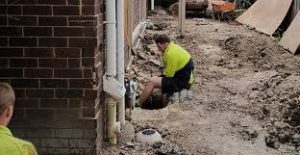Imagine yourself in one of Melbourne’s hipper cafes, enjoying a flat white, when you realize that the floor is uneven beneath your feet. Although you would brush it off, building professionals see it as a serious warning sign underpinning in construction. Underpinning isn’t simply a fancy word used by engineers; in our busy city, it truly means the backbone of maintaining safe structures.

So what’s the underlying principle here? Consider your home as an old friend who has supported you through good times and bad. But, they have begun to literally and symbolically fracture over time. Underpinning is like lending that pal a sturdy set of crutches so they can get back on their feet. It’s the procedure of fortifying a building’s or other structure’s foundation.
Why is Melbourne in such need of this? Indeed, the weather in Melbourne can be just as unpredictable as our terrain. It is as solid as rock one moment and changing like quicksand the next. These shifts in the ground can lead to uneven building settling and structural problems that would give any homeowner a fit.
There are other ways to skin this animal, so let’s speak about several techniques. In traditional underpinning, a new support system is created by excavating beneath the current foundation and pouring concrete. Consider it like purchasing new, more cushioned shoes for your house. Additionally, there is the contemporary method of screw piling, in which steel piles are driven into the earth to provide stability from below.
Has anyone ever claimed to be “as strong as an ox”? Our goal with underpinning is to ensure that your building remains sturdy regardless of the challenges posed by the elements. But it’s not always easy to get there. It takes deft hands and astute minds that function as one cohesive unit, like well-oiled machinery.
When you notice cracks in your walls or your flooring begin to sink, you might be wondering if you can just put some duct tape on it and call it a day. Warning: that will not suffice! Fast remedies don’t address the underlying issue and may cause more problems in the future. Think of them as lipstick on a pig.
Melbourne offers a good number of older, quirky, and characterful residences! Consider the Victorian-style cottage on my block, which belongs to Mrs. Jenkins. Last summer, she noticed that her doors were sticking more than usual. Her foundations had moved as a result of variations in soil moisture levels, as discovered by a brief examination (thanks once more to the erratic weather!). Her quaint home was restored in prime condition in no time thanks to superb underpinning repair completed by knowledgeable local specialists.
Let’s not deceive ourselves, though: choosing an underpinning doesn’t happen while having breakfast at St Kilda Beach and leafing through a Better Homes & Gardens magazine. It’s a significant matter that necessitates in-depth analyses by experts who are knowledgeable about every aspect of it, from soil conditions to structural integrity issues.
Yes, there is a financial cost. But consider this: when those tiny fissures become enormous chasms, would you rather spend now or pay twice as much later? Preventive measures are always preferable to corrective ones, such as having regular dental checkups instead of having root canal therapy later in life.
In conclusion, without really drawing any conclusions, keep in mind that underpinning is crucial to maintaining the structural integrity of Melbourne’s buildings in the face of the various environmental challenges we encounter on a daily basis. These range from shifting soil due to weather patterns to wear and tear from decades of use.
The next time you sip your coffee or walk by the stunning historic homes that line our streets, remember the unsung hero that keeps everything together in the face of adversity—the underpinning!